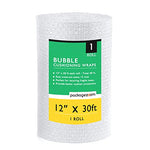You have no items in your shopping cart.
Tying a garbage bag closed may seem like a mundane task, but it plays a crucial role in managing household waste effectively. With advanced techniques for tying a garbage bag closed, you can prevent leaks, contain odors, and keep pests away. In this comprehensive guide, we will explore innovative methods to ensure your garbage bags are securely sealed, providing you with peace of mind and a clean living environment.
Why Properly Tying a Garbage Bag Matters
Properly tying a garbage bag is essential for several reasons. Firstly, it prevents leaks, which can be both messy and unhygienic. A securely tied bag ensures that liquids and waste materials stay contained, eliminating the risk of spilling onto floors or other surfaces.
Additionally, tying a garbage bag closed effectively traps unpleasant odors. This is especially important when dealing with organic waste or items that emit strong smells. By sealing the bag tightly, you can minimize odor leakage, maintaining a fresh and odor-free environment in your home.
Lastly, a tightly tied garbage bag acts as a deterrent for pests. Insects and rodents are attracted to the scent of decomposing waste. By securely sealing the bag, you create a barrier that reduces the likelihood of pests infesting your garbage and potentially spreading diseases.
Choosing the Right Garbage Bag
Before diving into the advanced techniques for tying a garbage bag closed, it's crucial to select the right type and size of garbage bag. Here are a few factors to consider:
-
Size: Ensure the bag is large enough to accommodate your household waste without overflowing. An undersized bag may lead to difficulties in tying it securely.
-
Strength: Opt for garbage bags with appropriate thickness and durability. Reinforced bags are better equipped to handle heavier loads and reduce the risk of tears or punctures.
-
Closure Mechanism: Some garbage bags come with built-in closure mechanisms such as drawstrings or flaps. These can simplify the tying process and provide added convenience.
By choosing the right garbage bag, you set a solid foundation for effectively tying it closed.
The Basic Knot Technique
The basic knot technique is a fundamental method for tying a garbage bag closed. Follow these steps:
-
Step 1: Gather the open ends of the garbage bag together, ensuring the waste is contained inside.
-
Step 2: Cross one end over the other to create a simple loop.
-
Step 3: Take the end that was crossed over and thread it through the loop, creating a knot.
-
Step 4: Pull both ends of the bag in opposite directions to tighten the knot securely.
The basic knot technique is simple yet effective, providing a reliable closure for most garbage bags. However, there are alternative methods that offer additional benefits.
The Twist and Tuck Method
The twist and tuck method is particularly useful when dealing with bags without drawstrings or flaps. It involves twisting the bag's opening and tucking it into itself. Here's how to do it:
-
Step 1: Gather the opening of the garbage bag, ensuring the waste is enclosed.
-
Step 2: Twist the bag's opening several times to create a tight spiral.
-
Step 3: Fold the twisted portion of the bag in half.
-
Step 4: Tuck the folded end of the bag into the space created by the twists.
The twist and tuck method provides a secure closure without the need for knots or additional ties. It also helps minimize the risk of bag openings and reduces the chances of leaks or odors escaping.
The Cross-Over Tie
The cross-over tie technique offers a more intricate closure, suitable for situations that demand extra security. Follow these steps to tie a garbage bag closed using the cross-over tie method:
-
Step 1: Gather the open ends of the garbage bag together, ensuring the waste is contained inside.
-
Step 2: Cross one end of the bag over the other, creating an "X" shape.
-
Step 3: Loop one end of the bag under the other.
-
Step 4: Pull both ends of the bag tightly in opposite directions to secure the tie.
The cross-over tie method provides a tight and robust closure, reducing the risk of bag openings and preventing leaks or odors from escaping.
Advanced Techniques for Tying a Garbage Bag Closed
In addition to the basic knot, twist and tuck, and cross-over tie methods, there are several advanced techniques that can further enhance the security and efficiency of tying a garbage bag closed. These techniques include:
-
The Double Knot: Similar to the basic knot, the double knot involves tying an additional knot after the initial one. This provides extra security and reduces the chances of the bag coming undone.
-
The Loop and Hook: This technique utilizes a loop and hook to fasten the garbage bag closed. By looping one end of the bag and hooking it onto a sturdy object (such as a doorknob or handle), you can achieve a hands-free closure.
-
The Zip-Tie Method: Using zip-ties is a convenient way to secure garbage bags, especially for heavier or bulkier waste. Thread a zip-tie through the bag's opening and tighten it securely to create a reliable closure.
-
The Rubber Band Hack: If you find yourself without any ties or closures, a rubber band can come to the rescue. Wrap a rubber band tightly around the bag's opening to keep it closed effectively.
By experimenting with these advanced techniques, you can find the method that best suits your needs and ensures a secure closure for your garbage bags.
FAQs
Q1: How can I prevent garbage bag leaks?
A1: To prevent garbage bag leaks, ensure the bag is free from any punctures or tears before use. Additionally, consider using a double layer of bags for extra protection.
Q2: Are drawstring bags more effective in preventing odors?
A2: Yes, drawstring bags provide a tighter closure, reducing the chances of odor leakage. They are particularly useful for containing strong-smelling waste.
Q3: Can I reuse garbage bags?
A3: While it's possible to reuse garbage bags, it's important to ensure they are clean and free from any contaminants. Washing and drying them thoroughly before reuse is recommended.
Q4: How do I dispose of a bag with hazardous waste?
A4: Bags containing hazardous waste should be handled according to local regulations. Contact your local waste management authority or consult their website for proper disposal guidelines.
Q5: Is it necessary to tie the garbage bag closed if it will be immediately thrown in a lidded trash bin?
A5: Even if the garbage bag will be placed in a lidded trash bin, it is still advisable to tie it closed. This provides an extra layer of security and prevents potential spills or odors when handling the bag.
Q6: Can I use the same techniques for tying outdoor garbage bags?
A6: Absolutely! The techniques discussed in this article can be applied to both indoor and outdoor garbage bags, ensuring secure closures and effective waste management.
Conclusion
Mastering the art of tying a garbage bag closed is an essential skill for effective waste management. By utilizing the advanced techniques outlined in this guide, you can prevent leaks, contain odors, and keep pests at bay. Remember to choose the right garbage bags, experiment with different closure methods, and always prioritize cleanliness and hygiene. With these advanced techniques, you'll be well-equipped to tackle your household waste disposal needs confidently.








